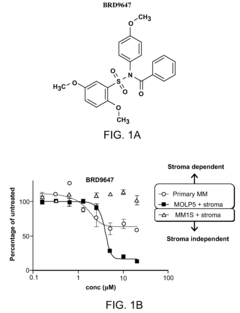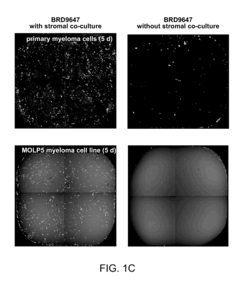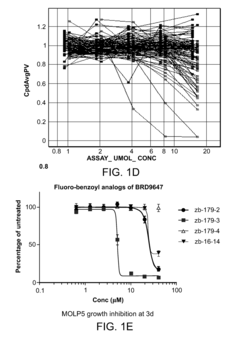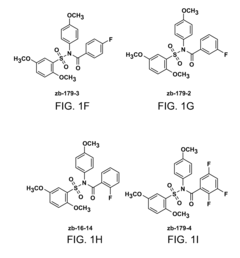Quantum Chemical Approaches to Tautomerization in Molecules
Quantum Tautomerization Background and Objectives
Quantum tautomerization, a fundamental process in molecular chemistry, has gained significant attention in recent years due to its profound implications in various fields, including drug design, materials science, and biochemistry. This phenomenon involves the rapid interconversion between structural isomers, known as tautomers, through the migration of a proton or electron within a molecule. The study of tautomerization is crucial for understanding molecular behavior, reactivity, and properties in different environments.
The evolution of quantum chemical approaches to tautomerization has been driven by the need for accurate predictions and deeper insights into molecular dynamics. Early theoretical studies relied on semi-empirical methods, which, while computationally efficient, often lacked the precision required for complex molecular systems. The advent of density functional theory (DFT) in the 1960s marked a significant milestone, providing a more robust framework for electronic structure calculations.
As computational power increased, more sophisticated ab initio methods, such as coupled cluster and multi-reference approaches, became feasible for studying tautomerization. These methods offer higher accuracy but at the cost of increased computational demands. The development of hybrid quantum mechanics/molecular mechanics (QM/MM) techniques has further expanded the scope of tautomerization studies to include large biomolecular systems and solvent effects.
Recent advancements in quantum chemical approaches have focused on improving the description of electronic correlation and nuclear quantum effects. The inclusion of anharmonic vibrational corrections and tunneling effects has become crucial for accurately predicting tautomerization rates and equilibrium constants. Machine learning techniques are also being integrated into quantum chemical workflows, enabling faster and more efficient exploration of potential energy surfaces.
The primary objectives of current quantum chemical approaches to tautomerization are multifaceted. Researchers aim to develop more accurate and computationally efficient methods for predicting tautomeric equilibria and transition states. There is a growing emphasis on understanding the role of the environment, including solvent effects and intermolecular interactions, in tautomerization processes. Additionally, efforts are being made to bridge the gap between theoretical predictions and experimental observations, particularly in complex biological systems.
Another key goal is to elucidate the mechanisms of proton transfer in various molecular systems, ranging from small organic molecules to large biomolecules. This understanding is crucial for rational drug design, as tautomerization can significantly affect a compound's binding affinity and pharmacokinetic properties. In materials science, researchers are exploring how tautomerization can be harnessed for developing novel functional materials with switchable properties.
Looking ahead, the field of quantum chemical approaches to tautomerization is poised for further advancements. The integration of artificial intelligence and machine learning algorithms promises to accelerate the discovery of new tautomeric systems and prediction of their properties. Moreover, the development of quantum computing technologies may revolutionize the field, enabling unprecedented accuracy and scale in tautomerization simulations.
Market Applications of Tautomer Prediction
Tautomer prediction has significant market applications across various industries, particularly in pharmaceutical research and development. In drug discovery, accurate prediction of tautomeric forms is crucial for understanding drug-target interactions and optimizing lead compounds. Pharmaceutical companies utilize tautomer prediction tools to assess the bioavailability, solubility, and stability of potential drug candidates, potentially saving millions in development costs and reducing time-to-market for new medications.
The agrochemical industry also benefits from tautomer prediction in the design of more effective and environmentally friendly pesticides and herbicides. By understanding the tautomeric behavior of these compounds, researchers can develop products with improved efficacy and reduced environmental impact, addressing growing concerns about sustainable agriculture.
In the field of materials science, tautomer prediction aids in the development of advanced materials with specific properties. For instance, in the design of organic electronics and photovoltaic materials, understanding tautomerization is essential for predicting and controlling electronic properties and light absorption characteristics. This application extends to the development of more efficient solar cells and organic light-emitting diodes (OLEDs).
The cosmetics and personal care industry utilizes tautomer prediction in formulating stable and effective products. Predicting the behavior of active ingredients under various conditions helps in developing skincare products with improved shelf life and efficacy. This application is particularly relevant for sunscreens and anti-aging products, where the stability of active compounds is crucial for product performance.
In the food and beverage industry, tautomer prediction plays a role in flavor chemistry and food preservation. Understanding the tautomeric forms of flavor compounds helps in developing new flavors and improving the stability of existing ones. Additionally, it aids in predicting the behavior of food additives and preservatives under different pH conditions and storage environments.
The environmental science sector employs tautomer prediction in assessing the fate and behavior of pollutants in ecosystems. This application is vital for understanding the environmental persistence, bioaccumulation, and toxicity of various chemicals, supporting more effective environmental risk assessments and remediation strategies.
In the field of forensic science, tautomer prediction assists in the analysis of trace evidence and the identification of unknown substances. This application enhances the accuracy of chemical analysis in criminal investigations and toxicology studies.
Current Challenges in Quantum Chemical Tautomer Modeling
Quantum chemical modeling of tautomerization in molecules presents several significant challenges that researchers are currently grappling with. One of the primary difficulties lies in accurately representing the complex electronic structures of tautomers. The subtle differences in electron distribution between tautomeric forms require highly precise quantum mechanical calculations, which can be computationally demanding.
Another major challenge is the accurate prediction of tautomeric equilibria. Tautomers often exist in a delicate balance, with small energy differences determining their relative populations. Current quantum chemical methods struggle to consistently predict these equilibria with the required level of accuracy, especially for larger, more complex molecular systems.
The treatment of solvent effects poses another significant hurdle. Tautomerization processes are often highly sensitive to the surrounding environment, particularly in solution. Incorporating solvent effects into quantum chemical calculations in a way that accurately captures their influence on tautomeric equilibria remains a formidable task.
Time-dependent phenomena associated with tautomerization also present challenges. Quantum chemical approaches typically focus on static structures, but tautomerization is inherently a dynamic process. Developing methods that can effectively model the kinetics of tautomer interconversion, including transition states and reaction pathways, is an ongoing area of research.
The issue of conformational flexibility adds another layer of complexity. Many molecules can adopt multiple conformations, each of which may have different tautomeric preferences. Adequately sampling this conformational space while simultaneously considering tautomeric forms significantly increases the computational cost and complexity of calculations.
Dealing with large biological systems, such as proteins or nucleic acids, where tautomerization can play crucial roles in function and reactivity, presents additional challenges. The sheer size of these systems often precludes the use of high-level quantum chemical methods, necessitating the development of more efficient approaches or hybrid methods that can maintain accuracy while scaling to larger systems.
Finally, the challenge of benchmarking and validation cannot be overstated. The scarcity of high-quality experimental data on tautomeric systems, particularly in solution and biological environments, makes it difficult to assess the accuracy of quantum chemical predictions and guide the development of improved methods.
State-of-the-Art Quantum Chemical Tautomerization Approaches
01 Tautomerization in polymer synthesis
Tautomerization plays a crucial role in polymer synthesis, affecting the properties and structure of the resulting materials. This process involves the interconversion between different structural isomers of a molecule, which can influence polymerization reactions and the final polymer characteristics. Understanding and controlling tautomerization in polymer precursors can lead to the development of novel materials with tailored properties.- Tautomerization in polymer synthesis: Tautomerization plays a crucial role in polymer synthesis, affecting the properties and structure of the resulting materials. This phenomenon can be utilized to create polymers with specific characteristics or to control the polymerization process. Understanding and manipulating tautomerization in monomers and polymer chains can lead to the development of novel materials with enhanced properties.
- Tautomerization in pharmaceutical compounds: Tautomerization is an important consideration in the design and development of pharmaceutical compounds. It can affect the bioavailability, efficacy, and stability of drugs. Researchers study tautomeric forms of potential drug molecules to optimize their therapeutic properties and minimize unwanted side effects. Understanding tautomerization can also help in predicting drug-target interactions and improving drug formulations.
- Tautomerization in electronic and optoelectronic devices: Tautomerization phenomena are exploited in the development of electronic and optoelectronic devices. This includes applications in organic light-emitting diodes (OLEDs), photovoltaic cells, and molecular switches. The ability of certain molecules to undergo tautomerization can be used to create materials with tunable electronic properties or to design responsive molecular systems for sensing and switching applications.
- Computational methods for studying tautomerization: Advanced computational methods are employed to study tautomerization in molecules. These include quantum mechanical calculations, molecular dynamics simulations, and machine learning approaches. Such methods help predict tautomeric equilibria, understand the energetics of tautomerization processes, and assist in the design of molecules with desired tautomeric properties. Computational tools are particularly valuable in screening large numbers of compounds and guiding experimental research.
- Tautomerization in biological systems and enzymes: Tautomerization plays a significant role in biological systems, particularly in enzyme catalysis and DNA base pairing. Understanding tautomeric forms of biomolecules is crucial for elucidating reaction mechanisms, explaining mutation processes, and designing enzyme inhibitors. Research in this area focuses on how tautomerization affects protein-ligand interactions, DNA replication fidelity, and the function of various biomolecules.
02 Tautomerization in organic electronic devices
Tautomerization is significant in the field of organic electronic devices, such as OLEDs and organic photovoltaics. The process can affect the electronic properties of organic molecules, influencing charge transport and light emission characteristics. By understanding and manipulating tautomerization in organic semiconductors, researchers can optimize device performance and develop new materials for electronic applications.Expand Specific Solutions03 Tautomerization in drug design and development
Tautomerization is a critical consideration in drug design and development, as it can affect the pharmacological properties of molecules. Different tautomeric forms of a drug may have varying binding affinities to target proteins or different metabolic profiles. Understanding tautomerization can help in predicting drug-target interactions, optimizing drug efficacy, and improving the overall drug discovery process.Expand Specific Solutions04 Computational methods for predicting tautomerization
Advanced computational methods have been developed to predict and analyze tautomerization in molecules. These techniques involve quantum mechanical calculations, molecular dynamics simulations, and machine learning approaches to model tautomeric equilibria and energetics. Such computational tools are valuable for understanding tautomerization processes in complex systems and guiding experimental studies in various fields of chemistry and materials science.Expand Specific Solutions05 Tautomerization in catalysis and reaction mechanisms
Tautomerization plays a significant role in catalysis and reaction mechanisms, influencing the pathways and outcomes of chemical transformations. Understanding tautomeric equilibria can help in designing more efficient catalysts and optimizing reaction conditions. In some cases, tautomerization can be a key step in catalytic cycles or contribute to the selectivity of chemical reactions.Expand Specific Solutions
Key Players in Quantum Chemistry Software and Research
The field of quantum chemical approaches to tautomerization in molecules is in a relatively mature stage of development, with ongoing research focusing on refining methodologies and expanding applications. The market size for this niche area is moderate, primarily driven by pharmaceutical and materials science industries. Technological maturity varies among key players, with academic institutions like Harvard, MIT, and Tsinghua University leading in fundamental research. Companies such as Sunshine Lake Pharma, Humanwell Healthcare, and Angion Biomedica are applying these approaches in drug discovery and development. Collaboration between academia and industry is prevalent, fostering innovation and practical applications in molecular design and drug optimization.
President & Fellows of Harvard College
Tsinghua University
Breakthrough Quantum Algorithms for Tautomer Prediction
- A glucocorticoid receptor agonist linked to a protein, such as an antibody or antigen-binding fragment, is used to create an immunoconjugate that can target immune cells, influence cytokine release, and affect various immune-related processes, including skin fibrosis and arthritic symptoms, while maintaining biological safety and plasma stability.
- The development of derivatives or analogs of BRD9647, which inhibit the proliferation of multiple myeloma cells by covalently modifying residues of polypeptides with a benzoyl group, specifically targeting stroma-dependent multiple myeloma cells through benzoylation of cellular amines.
Computational Resources and Infrastructure Requirements
The computational resources and infrastructure requirements for quantum chemical approaches to tautomerization in molecules are substantial and multifaceted. High-performance computing (HPC) clusters are essential for running complex quantum chemical calculations, particularly for larger molecular systems or when employing high-level ab initio methods. These clusters typically consist of multiple interconnected nodes, each equipped with powerful multi-core processors and significant amounts of RAM.
GPU acceleration has become increasingly important in quantum chemistry calculations, especially for density functional theory (DFT) methods. Modern GPUs can significantly speed up certain types of calculations, making them a valuable addition to traditional CPU-based systems. However, not all quantum chemistry software packages are optimized for GPU acceleration, so the choice of hardware must be aligned with the specific software requirements.
Storage infrastructure is another critical component, as quantum chemical calculations can generate large volumes of data. High-speed, large-capacity storage systems are necessary to handle the input and output of calculations efficiently. Solid-state drives (SSDs) are often used for temporary storage and fast data access, while larger capacity hard disk drives (HDDs) or tape systems may be employed for long-term data archiving.
Network infrastructure plays a crucial role in facilitating data transfer between compute nodes and storage systems. High-bandwidth, low-latency interconnects such as InfiniBand are commonly used in HPC environments to ensure efficient communication and data movement.
Software requirements for tautomerization studies include specialized quantum chemistry packages such as Gaussian, GAMESS, or Q-Chem, as well as visualization tools for analyzing molecular structures and electronic properties. Many of these software packages require specific compilers and libraries, necessitating careful management of software dependencies and version compatibility.
Cloud computing resources have emerged as an alternative or complement to on-premises HPC systems. Cloud platforms offer scalability and flexibility, allowing researchers to access powerful computational resources on-demand. However, considerations such as data security, transfer speeds, and cost management must be carefully evaluated when utilizing cloud resources for sensitive or large-scale quantum chemical calculations.
Interdisciplinary Collaborations in Quantum Chemistry
Interdisciplinary collaborations in quantum chemistry have become increasingly crucial for advancing the field of tautomerization studies in molecules. The complex nature of tautomeric processes requires expertise from various scientific disciplines to develop comprehensive and accurate models. Quantum chemists are now actively engaging with experimental spectroscopists, computational biologists, and materials scientists to tackle the challenges associated with tautomerization.
One significant area of collaboration is between quantum chemists and experimental spectroscopists. By combining high-level quantum chemical calculations with advanced spectroscopic techniques, researchers can validate theoretical predictions and refine computational models. This synergy has led to improved understanding of tautomeric equilibria in complex molecular systems, particularly in biological molecules and pharmaceutical compounds.
Computational biologists have also become valuable partners in quantum chemical studies of tautomerization. Their expertise in modeling large biomolecules and understanding protein-ligand interactions has been instrumental in elucidating the role of tautomerism in drug-target binding and enzyme catalysis. This collaboration has resulted in more accurate predictions of drug efficacy and the development of novel therapeutic strategies.
Materials scientists have joined forces with quantum chemists to explore tautomerization in solid-state systems and nanomaterials. This interdisciplinary approach has led to breakthroughs in designing molecular switches and sensors based on tautomeric transitions. The combined knowledge of quantum chemistry and materials science has enabled the development of new functional materials with tunable properties.
Another emerging area of collaboration is with data scientists and machine learning experts. By leveraging large datasets of molecular properties and tautomeric behaviors, researchers are developing sophisticated machine learning models to predict tautomerization energetics and kinetics. This data-driven approach complements traditional quantum chemical methods and accelerates the discovery of new tautomeric systems with desired properties.
The integration of quantum chemistry with other fields has also sparked innovation in experimental techniques. For instance, collaborations with physical chemists have led to the development of ultrafast spectroscopy methods capable of capturing tautomeric transitions in real-time. These advancements have provided unprecedented insights into the dynamics of tautomerization processes.
As interdisciplinary collaborations continue to flourish, the field of quantum chemical approaches to tautomerization is poised for rapid growth and innovation. The cross-pollination of ideas and methodologies from diverse scientific disciplines is driving the development of more accurate, efficient, and broadly applicable computational tools for studying tautomeric phenomena in molecules.







